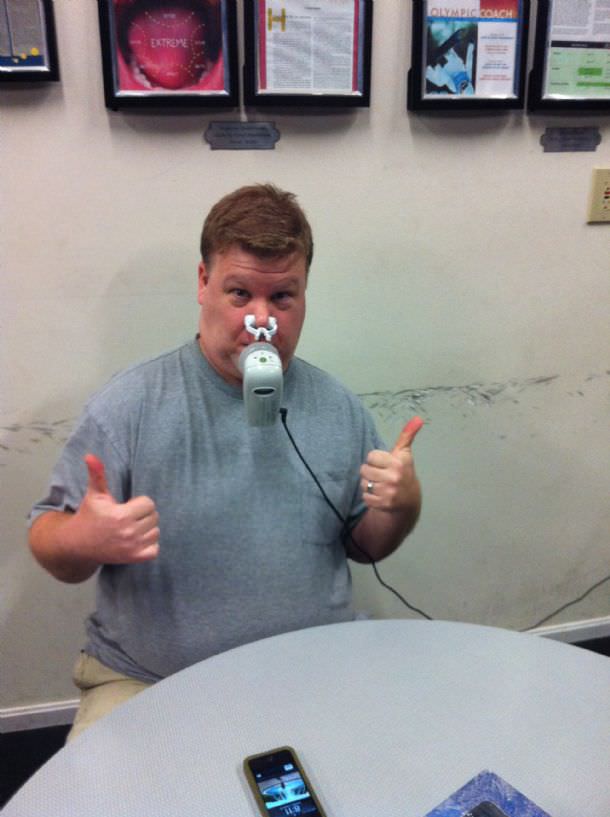Increasing Your Basal Metabolic Rate
RichlynneAs we age, most of us become less active and sedentary. We may not have always been that way, but with time increasingly with little opportunity to move about, we’ve become that way. We occasionally work overtime. We skip meals and later overeat, as though we could catch up with what we missed, or we snack on something sweet. We tend to be happy about our condition until we realize we’ve gained a lot of weight and don’t look the way we want to look.
Estimates have put about 60% of the American adult population in the sedentary category. And, in that regard, it’s not too surprising that about 60% of the population is either overweight or obese. Clearly, under-activity is the most important contributor. Exercise of any kind increases the effect of insulin-promoting fat loss and development of a leaner, more muscular appearance. Our metabolic rate, which is accelerated by exercise, is the most important means of preventing fat build up or promoting fat breakdown. We do tend to slow down with age, and our base-line metabolism, sometimes called basal metabolic rate (BMR), decreases at about 5% per decade after our 20th birthday. But it doesn’t have to be that way.
Exercise and physical activity every day are contributing factors in BMR, but not the only contributors. Eating and the digestive processes are as well. When we eat our bodies activate our metabolism—quiet cells and tissues become active, and we burn more calories while digestion occurs. The worst eating behavior is skipping meals and subsequently overeating or binging on junk food until we get to the next meal when we can overeat again. This is a nasty recipe for getting fatter and sending our metabolism into hiding. We can reverse the trend, but it requires increasing your BMR.
The best initial strategy to increase BMR is to increase your activity level. Shun the sedentary style. Use the stairs, not the elevator. Go for a walk. Don’t slump down into a chair after dinner. Find something else to do. When you add activities, you should aim for 30 min or more of moderate physical activity every day.
Set up an exercise program. Weights are not necessary, but some kind of hard effort is required, e.g., heavy gardening, chopping wood, fast bike riding. Either weights or resistance training and cardio-aerobic activity such as running or fast walking can elevate your BMR for hours afterward. But weights or resistance training can activate BMR for up to a day, whereas your cardio-aerobic efforts will only last one to six hours. Weights or resistance training will build new muscle and increase you metabolism. New muscle will burn an addition 500 cal or more a day at rest. Thus, you get both a short term and long metabolism boost with weights/resistance efforts. Weight training will generally increase muscle tone, trim the physique, and give one a sense of well-being. Frankly, you’ll look better and feel better as well.
Food elevates metabolism. This is a major reason why eating every few hours is preferable to longer intervals between meals. Never give your body the chance to think it is starving. That will slow your BMR immediately and even cause you to overeat later. Vegetables and fruits contain complex carbohydrates that are burned or digested slowly. There is no big glucose release into the blood. This eliminates a need for spike in the insulin concentration. Eat low glycemic index foods and lower the amounts of fatty foods combined with sugar. Add high fiber foods such as beans, nuts, grains, and some cereals. Cut sugar, fat, refined flour, but increase fiber, especially when combined with fruits and vegetables. Cut carbohydrates, especially the high starchy vegetables (potatoes, rice, or corn). It may be useful to aim for 15-35 % of diet as carbohydrates. Keep carbohydrates but keep them lower than usual as a percentage of the total caloric intake. Increase protein especially if you are doing some weights or resistance work.
Eat 6 times a day if you can: 3 meals plus 3 snacks. But reduce the size of portions especially if you are already overweight. Stop the junk food! No sugar drinks. Minimum alcohol, coffee, tea are advisable. And stay away from all dietary supplements. They are unnecessary and there are no quick fixes. Drink water as much as possible. Stay hydrated. Remember water accounts for 2/3 of body weight. Water assists in building muscle tone, fat removal, removes (flushes out) toxins. Drinking water will help whatever your plan. About a gallon a day is reasonable place to start. Some recommend more but a gallon is probably far more than most people usually drink.



